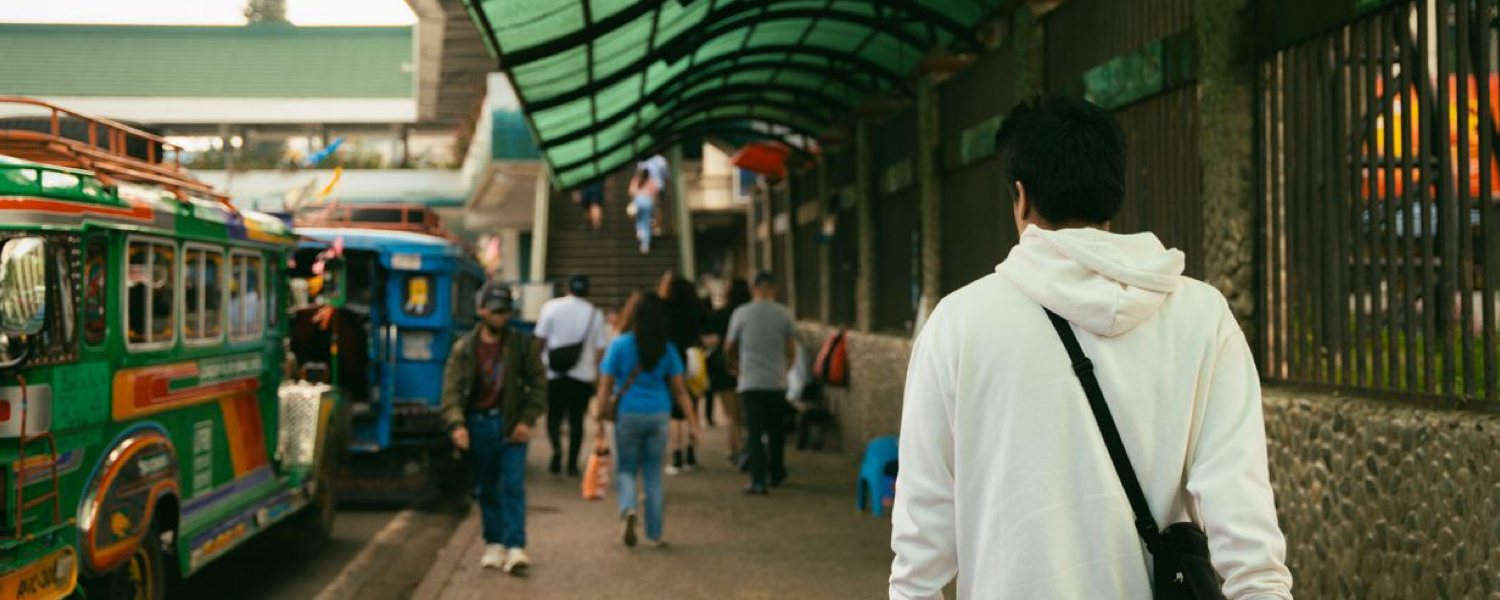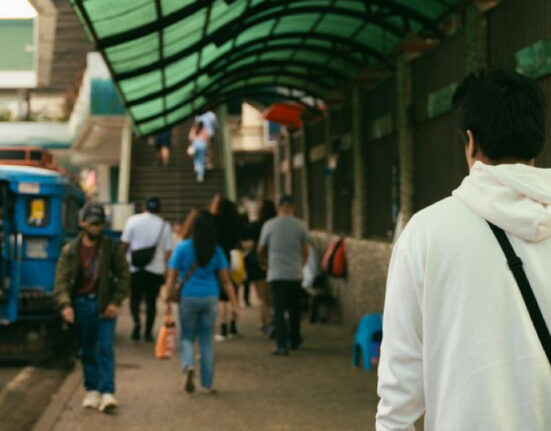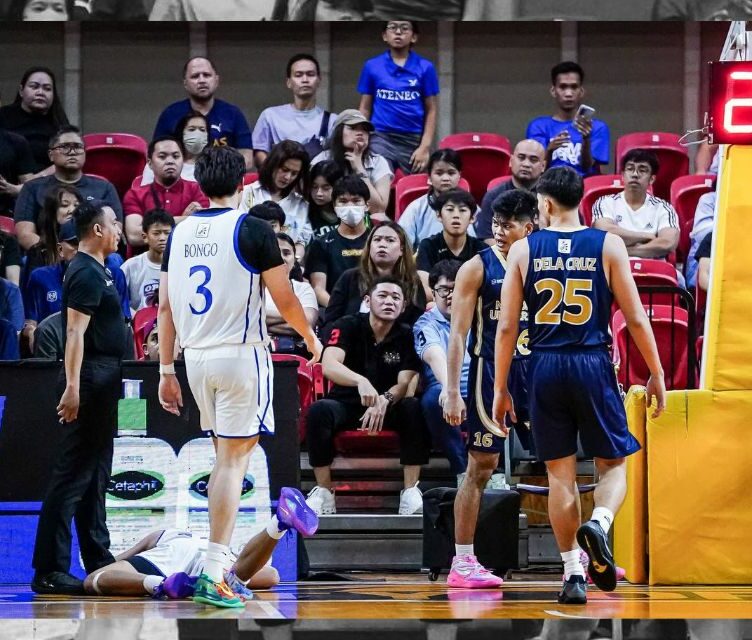THEY say commuting in Metro Manila will humble you in ways you don’t expect. Filipino commuters struggle with traffic and congested buses, often spending hours waiting for trains to arrive. The country’s capital is a bustling place as hundreds of thousands of commuters travel for work and school every day.
With the advent of the transportation network vehicle service (TNVS), commuters can book their ride instead of waiting for public utility vehicles (PUVs) to arrive. In a matter of choosing convenience and practicality with today’s transportation landscape, which holds more significance?
On Practical Ways of Commuting
Ride-hailing applications have become one of the convenient ways for commuters to ease their travel. With just a click, they are all set to wait for their rider or driver to arrive.
Patricia Collantes, a 22-year-old student from De La Salle-College of Saint Benilde (DLSU-CSB) who just finished her internship, prefers to book her ride from her dorm in Manila to her internship office in Makati. It usually takes her an hour to get to her destination, depending on the traffic.
Despite the convenience TNVS offers, Collantes still finds it stressful to commute because booking a ride takes a lot of time, as many commuters are securing their ride, especially during rush hour.
“May times talaga na kahit umaga, mahirap mag-book kaya ‘pag malas, napapa-add ako ng tip ma-accept lang booking ko,” Collantes told RepublicAsia.
One of the problems she observes whenever she commutes is the traffic. Even if it’s not yet peak hours, jammed roads and packed spaces have become the “new normal.” It’s a disheartening routine, yet it’s evident that almost all commuters have become desensitized to this treatment.
On Must-Have Commute Essentials
Being a student commuter can be a handful of experiences. Norhana Pagtuden, a 19-year-old student from Polytechnic University of the Philippines (PUP), shared her commute journey, travelling from Taguig all the way to her university in Manila.
Pagtuden’s travel time from home to school takes about two hours, still depending on the traffic. Her commute starts with riding a tricycle, hailing a jeep going to Metro Rail Transit Line 3 (MRT-3) Taft station, riding the train, and getting off at Cubao station. She will walk the distance between the MRT-3 Line, passing through malls, towards the Light Rail Transit Line-2 (LRT-2) Cubao station. She will ride the train once again from LRT-2 Cubao to Pureza station. From there, instead of riding a tricycle, she prefers to walk from the station to her department building.
Pagtuden also shared how the 50% discount on trains is helpful for a student like her.
“Noong nagkaroon ng 50% discount, sobrang laking tulong niya. Imagine, 24 pesos ta’s magiging 12 pesos na lang, so ang laking tipid noon,” Pagtuden told RepublicAsia.
Commuting is not for the weak, as Gen Zs would have called it. Enduring a long queue of lines, packed platforms, and bumper-to-bumper vehicles are the realities for commuters. Being a “commute warrior” definitely prepared Pagtuden for better or for worse. She ensures all her essentials are ready and placed in her bag because there is no room for forgetting things for someone who comes from the South part of Metro Manila.
For Pagtuden, it’s important to bring an umbrella, a water tumbler, and a handkerchief. She usually doesn’t bring these things, but because of the stressful commute, she’s now more than obliged. These essentials are important for her comfort, especially when commuting takes a while.
On a Better Transport System
Elyssa David, 22, a graphic designer, travels from her home in Quezon City to her work in Pasig City.
To get to her work, she takes a tricycle that will lead her to the nearest jeepney stop. From there, she rides a jeep going to the MRT-3 North Avenue station. Since there are many ongoing construction along the area, she is compelled to walk longer than intended to arrive at the MRT-3. From MRT-3 North Avenue, she gets off at Shaw station. The estimate of her travel time lasts for almost an hour and a half, depending on traffic conditions.
When asked if the transportation system that we have today is commute-friendly, David expressed her thoughts on the traffic problem in Metro Manila. Being tired from the daily grind and dealing with traffic on the way home is dreadful. What should be a simple journey home turns into a relentless commute can be demoralizing.
“The volume of people who commute, it does not match the transportation, so there’s no really smooth journey for everyone who commutes,” David told RepublicAsia.
As a commuter, David emphasized that there should be proper and intended sidewalks. During her daily commute, she has encountered narrow walkways that barely fit one person, leading to frustrating foot traffic among pedestrians. Commuters walk a lot and come from different modes of transportation, and a wider sidewalk that can accommodate a large volume of people can ease crowded spaces.
There’s a need to strike a balance between the number of public utility vehicles and the volume of commuters. The road infrastructure and transportation system need to be prioritized and worked on one by one to provide a better mobility and commute experience for everyone.
No Commuter Should Be Left Behind
Commuters increase as time passes by, which is why urban mobility should keep up with the changing transportation conditions. In this economy, where practicality and convenience are challenging to achieve in both ways, there’s a call for a better transport system. A transport system that is inclusive for students, workers, Persons With Disability (PWD), and the elderly.
A better transportation system means living our lives with ease. Our transport system should empower every commuter, not hinder them from their daily work and opportunities. At the end of the day, safe and reliable transportation should not be a luxury; it’s a right for every Filipino commuter.
With reports from Eunice F. De La Cruz
How useful was this post?
Click on a star to rate it!
Average rating 5 / 5. Vote count: 1
No votes so far! Be the first to rate this post.
We are sorry that this post was not useful for you!
Let us improve this post!
Tell us how we can improve this post?








